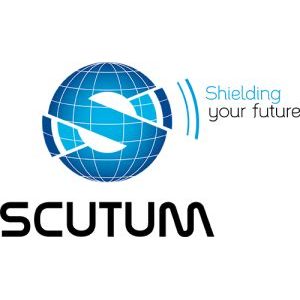A Guide to Cladding and the Fire Safety Implications
Ever since the Grenfell Tower fire in 2017, the subject of cladding and its role in the disaster has been the subject of much debate. The public inquiries that looked into the cause of the fire, why it got out of hand and how such a tragedy can be prevented from happening again, have led to a range of new legislation and guidelines surrounding its use.
We examined the new legislation being introduced in early 2023 in a previous article.

However, there is still a lot of confusion surrounding many aspects of cladding on high-rise buildings. People owning flats in buildings with it already in place are feeling particularly vulnerable to the potential for huge bills to cover its removal and/or replacement.
This article will examine this thorny issue to help those in this position to understand what the government is doing to help.
What is cladding and why can it be unsafe?
Cladding is an extra layer of material added to a building that is intended to both provide extra insulation and offer greater protection for the outside against weathering and other general wear and tear.
The cladding used on Grenfell Tower – and which is still in place on buildings across the country – comprised lightweight polyethylene-filled aluminium composite panels, which included a 50mm inner ventilation cavity. That created a double potential for disaster: firstly, polyethylene is one of the easiest to ignite of modern plastics and also burns at incredibly high temperatures once alight; secondly, the ventilation cavity created a chimney that allowed the flames to rise up the building, out of reach of the fire brigade.
This type of cladding was banned in the immediate aftermath of Grenfell for buildings over 18 metres high, with further consultations carried out in 2020 to investigate whether this should be extended to buildings over 11 metres high.
As a result, new legislation has been introduced under the Fire Safety Act 2021, and that also amends article 6 of the Regulatory Reform (Fire Safety) Order Act 2005.
What are the new regulations regarding cladding?
The new regulations make it clear that a high-rise residential building’s structure, external walls and flat entrance doors fall within the scope of the Fire Safety Order, and should thus be examined as part of a fire risk assessment.
If a potential risk is identified, a further, more detailed assessment needs to be conducted under PAS 9980. According to the government factsheet that accompanied the new legislation, PAS 9980 “provides a methodology for the fire risk appraisal of external wall construction and cladding of existing multi-storey and multi-occupied residential buildings”. It should also “provide the Responsible Person with recommendations on remedial action considered necessary, with a suitable time frame that takes into account both the nature of the works required for remediation and any recommended interim measures”.
Other changes include bringing hotels, hostels, and boarding houses within scope of the legislation and introducing a complete ban on the type of cladding used at Grenfell on all new buildings, and buildings undergoing building works, immaterial of their height or use.
How does this affect leaseholders in high-rise buildings?
If you currently own, or are thinking about buying, a flat in a high-rise building, you are naturally going to be concerned about any cladding present.
The Building Safety Act 2022 has introduced a range of measures designed to protect leaseholders who might be affected by the necessity for remediation work on buildings with unsafe cladding.
If you are a qualifying leaseholder, this means you will not be liable for any costs associated with the removal of unsafe cladding. The main terms by which you count as a qualifying leaseholder include:
- Your lease is for at least 21 years
- The building is at least 11 metres or five storeys high
- The lease was granted before 14 February 2022
- On 14 February 2022, the property in question was your only or main residence and you did not own three or more properties in the UK
Whether you are a qualifying leaseholder or not, you will not be liable for any costs if the landlord was – or is associated with – the developer responsible for the defect in the first place.
In both the above cases, if you received a bill for remediation work before 28 June 2022 and have not paid it, you do not need to do so. If you have already paid a bill dated after 28 June 2017, this will not be reimbursed, but it will count towards the cap on costs for non-cladding defects.
Please note that this legislation applies only in England, and not in Wales, Scotland or Northern Ireland. Government advice regarding qualifying leaseholders can be read in full here. Further measures included in the Act designed to protect leaseholders can be read here.
Buying a flat in a high-rise building with cladding
If you are considering buying a flat in a building that has cladding, you need to be sure about the legality of the cladding and your potential liability should work be required. Your surveyor should be able to advise on what is likely to require further investigation, but talking to other tenants could also be helpful.
Your solicitor will not be able to advise on structural or fire safety issues, but will be able to determine if an appropriate fire risk assessment has been carried out or if there is any government funding for fire safety works. You should not take the fact that you have been offered a mortgage on a flat as meaning that the flat is safe or that you will not be liable for remediation costs.
For all your fire safety needs across London, Surrey and the South East of England, Scutum London is a leading provider of professional fire risk assessments, fire detection and alarm systems, and fire extinguishers.
Contact us now to find out more.
Request a Callback
Just fill in your details below and we'll get back to you as soon as we can!

About Scutum London
Scutum London is a leading expert in fire safety and security solutions for businesses and organisations located across South East England, including London and Surrey.
From fire alarms, fire extinguishers and fire risk assessments to access control, CCTV and intruder alarm systems – and a lot more besides – we offer a comprehensive range of products and services designed to keep you, your business and your staff and visitors safe.
With decades of industry experience to call on, we’re proud to hold accreditations from leading trade associations and bodies such as British Approvals for Fire Equipment (BAFE), the British Fire Consortium, the Fire Industry Association (FIA) and Security Systems and Alarms Inspection Board (SSAIB).
If you’d like to find out more about Scutum London, get in touch with our friendly team or explore our products and services on our site.

